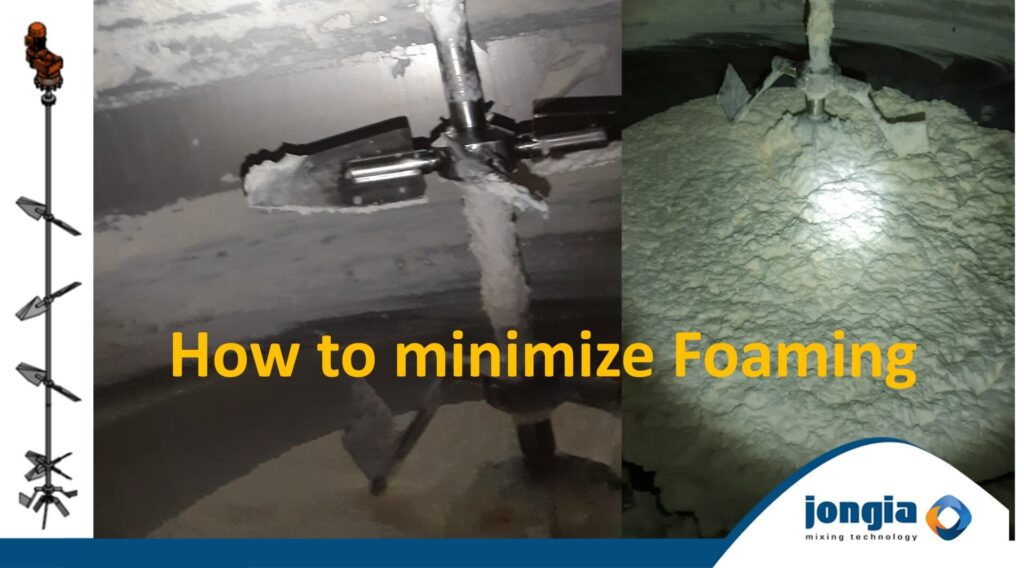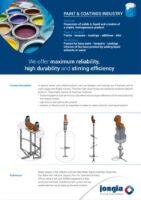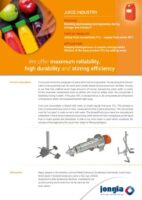Through years of experience, Jongia Mixing Technology knows the correct application to many mixing processes. So too with mixing processes where the elimination of foaming – which can occur through the behaviour of the recipe – is of great importance. Because if foaming can be avoided, the mixing process will go much more smoothly, resulting in shortened production times!
How foaming starts in the mixing process
Whenever powders, solids or other substances are added to a liquid, there is a chance of air-entrapment. This could happen, for example, by the powder, a solid or substance being dumped or absorbed into the liquid. As soon as a mixing element faces these conditions, there is a chance a layer of foam starts forming. Depending on the type of foam, this could massively disrupt the process. Thus, preventing foaming is strongly preferred.
The correct mixer to prevent foaming
The type of mixer used strongly influences whether foaming occurs. However, the agitator is also capable of preventing foaming, provided the correct mixertype was selected.
For selecting the correct mixertype, these are the most important aspects to keep in mind:
- Correct position of the mixer inside the tank;
- Correct selection in mixing elements;
- Correct speed rates of mixing elements;
- Correct method of dosing the product additions inside the mixing tank.
Question from a customer
Since Jongia Mixing Technology has much experience with avoiding foaming , the company was recently asked by one of its customers in the food industry to help solve a problem related to foaming. The customer was looking for a solution for a production process where milk and cream had to be mixed with lactose, starch and sugar, among other ingredients. The resulting product was then ready to be finished with colouring and flavouring and headed for the dairy shelves in grocery stores.
However, during mixing of sugar and starch, a foam layer quickly developed. This layer did not dissipate after the mixing process, which disrupted the production process and resulting in continuous massive delays. The agitator was positioned correctly in the tank, but was designed based on different parameters than its intended use. A survey on the mixer and the production process, conducted by Jongia Mixing Technology, proved to be the key in solving the issue.
Why did the foam layer not dissipate?
During absorption of the powders prior to dispensing them in the tank, air became entrapped. The absorbed powders ended up in fairly low volume levels, where the mixing element was mixing at that moment. The mixing element picked up the absorbed powders plus the entrapped air, resulting in the creation of a foam layer. Despite the product levels in the tank rising after that, better positioning the mixing element below the liquid surface, the foam layer had already been created and stayed as a layer on top of the fluid.
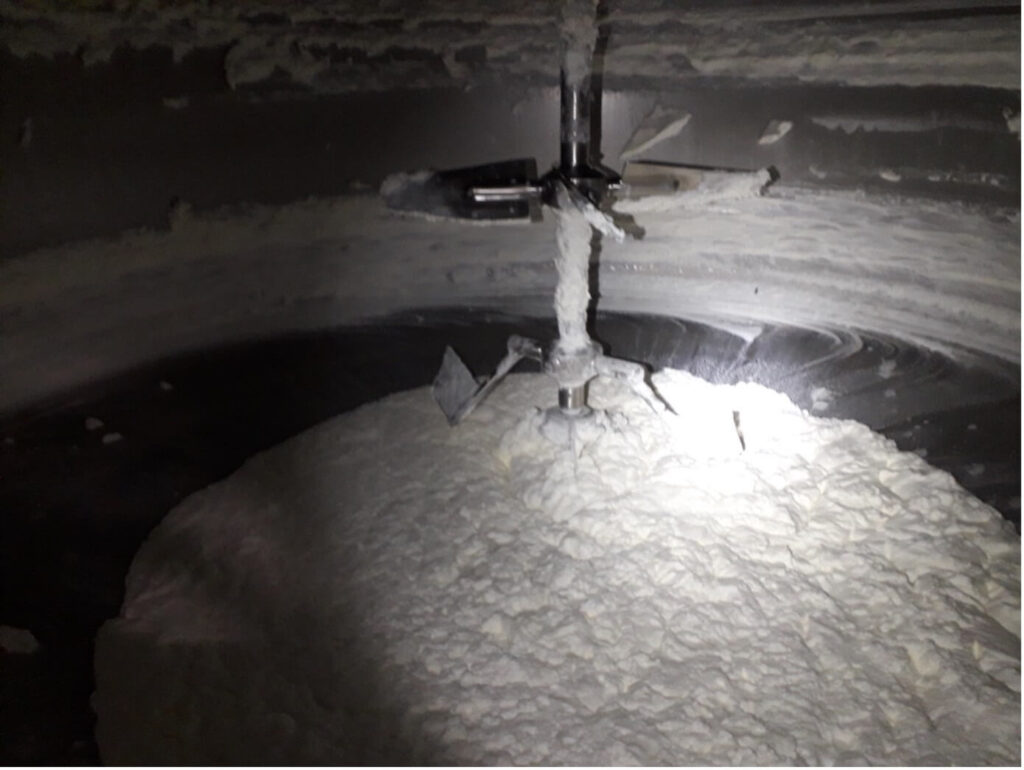
The solution
Eventually, a solution was achieved that maintained the mixer’s position and nominal rpm, and three aspects were altered to prevent future air-intake, as follows:
- The absorbed powder would not be deposited in the tank until a higher volume level was achieved;
- The Jongia agitator would be adjusted more sufficiently to the tip speed of the mixing element through use of a frequency converter, in order to prevent shear during filling;
- The lowest mixing element was placed at an even lower level inside the tank.
Furthermore, there were some moderate savings to be realised in energy usage, which quickly compensated the trouble-shooting investments and even resulted in cost reductions!
This trouble-shooting ordeal once more made it clear how important the mixing process is, and that Jongia Mixing Technology is well-equipped in solving process issues.

The solution
Eventually, a solution was achieved that maintained the mixer’s position and nominal rpm, and three aspects were altered to prevent future air-intake, as follows:
- The absorbed powder would not be deposited in the tank until a higher volume level was achieved;
- The Jongia agitator would be adjusted more sufficiently to the tip speed of the mixing element through use of a frequency converter, in order to prevent shear during filling;
- The lowest mixing element was placed at an even lower level inside the tank.
Furthermore, there were some moderate savings to be realised in energy usage, which quickly compensated the trouble-shooting investments and even resulted in cost reductions!
This trouble-shooting ordeal once more made it clear how important the mixing process is, and that Jongia Mixing Technology is well-equipped in solving process issues.
Contact our specialized team for all your questions

Tom Pruymboom
Sales Director
Area Worldwide

Bart Brouwer
Area Sales Manager
Area Worldwide
Technical Questions?

Sijko van der Veen
Application Engineer
Technical Specialist

Sijko van der Veen
Application Engineer
Technical Specialist
Related Articles
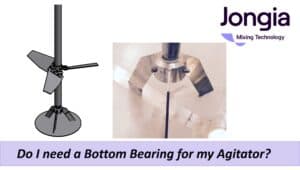
Do I need a Bottom Bearing for my agitator?
Do I need a Bottom Bearing? The installation of a bottom bearing is not mandatory. While it offers certain advantages, there are also drawbacks to consider. It is important to note that the bottom bearing functions more as a displacement
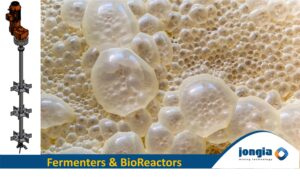
Fermentation & Bioreactor Mixing Process
Bioreactors and Fermenters are culture systems to produce cells or organisms. They are used in various applications, including basic research and development, and the manufacturing of biopharmaceuticals, food and food additives, chemicals, and other products. A broad range of cell types and organisms can be cultivated in bioreactors and Fermenters, including cells (like mammalian cell lines, insect cells, and stem cells), microorganisms (like bacteria, yeasts, and fungi), as well as plant cells and algae. The words “Bioreactor” and “Fermenter” are basically the same thing.

Biodiesel blending with zero leakage!
Fuel blending is a critical component of biodiesel production. A properly blended fuel can increase energy efficiency, reduce emissions and improve performance. However, it can be difficult to achieve consistent fuel quality during blending due to differences in storage tanks,


